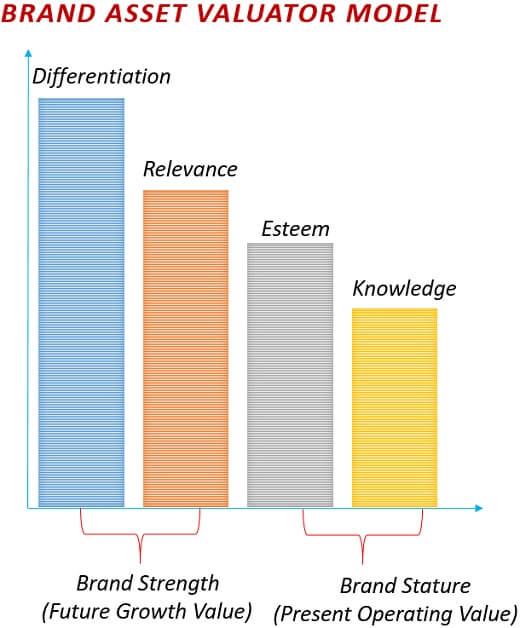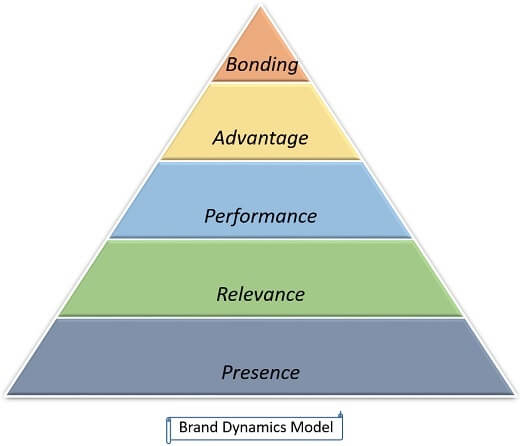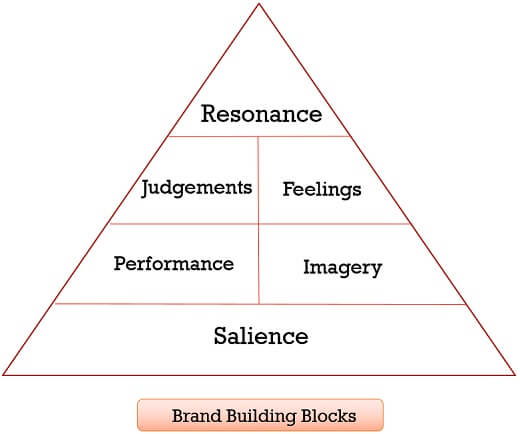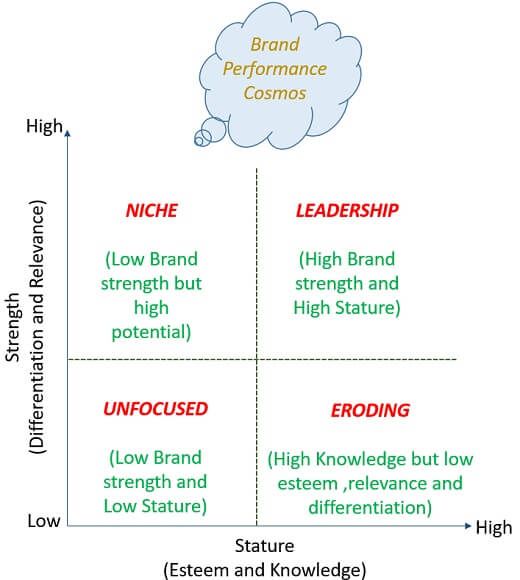Definition: Brand Equity is the worth of the brand in the consumer’s mind, i.e., it is an added value given by the customer to any brand, as a well-known brand name becomes a worthwhile asset for the company. It lifts brand significance in the marketing strategy. Trademarks and patents are some of the brand assets, and apart from that brand loyalty, brand quality is the other significant elements of the brand.
By positioning and providing quality products to the consumers as well as benefiting them by solving their problems, the business will create better brand equity for their products.
Content: Brand Equity
Brand Equity Models
There are various contradictory models of brand equity; some amidst them are discussed below:
- Brand Asset Valuator (Y&R)
Y&R (advertising agency) is the world’s most extensive operating quantitative study of brands, on the basis of research with over 8,00,000 customers of more than 50 countries.
In accordance with brand asset valuator, this model is based on the 4 key components of brand equity; they are as follows:

- Knowledge: It determines the understanding of the brand empathizing consumer’s experience and awareness, i.e., how familiar the consumer is with the brand.
- Esteem: The sense of the consumers and their loyalty towards the brand as well as how well the brand is regarded and respected by the consumer.
If the consumer is happy and patronizes with the brand, it can be said that the brand has good esteem. - Relevance: Relevance implies how appropriate the brand is for the consumer, i.e., how important and relevant is that particular brand for the consumer.
- Differentiation: Differentiation shows the brand’s point of difference sympathizing margins and cultural currency, i.e., does the brand has a leadership position or not?
The strength of the brand is determined by combining the relevance and differentiation, which will anticipate the future growth value of the business.
Whereas, knowledge and esteem together will generate a report card or brand stature of the prior conducts and a backward index of the present operating value.
The brand’s current and future status can be revealed efficiently by understanding the relation amidst these dimensions of the brand.
Strength and stature together form the power grid describing the stages in the cycle of brand development in subsequent sections.
New brands demonstrate high-level differentiation than relevance, although esteem and knowledge remain low.
Leadership brands become compelling, combining high brand strength with high margin power, and the enormous potential to build future value.
With the shift of the strength, the brand becomes mass-market brands, and at the last eroding brands demonstrate high knowledge, indicates past performance and a lower level of esteem, relevance and differentiation.
- Brandz
Brandz is developed by Millward Brown, a marketing research consultant. It is the world’s biggest brand equity database consisting of data of various brands gathered from thousands of interviews from various peoples.
The heart of this model is the Brand Dynamics Model, which reveals current equity and opportunities for the growth of the brand.
For summarizing the brand’s equity, the brand dynamics applies a simple score that is identifiable to the real-world business outcomes.
Brand dynamics model manages three different brand associations and the favourable outcomes, in turn, reflects:
- Power
- Premium
- Potential
This model determines how well position a brand holds in a market and how is the competition in the marketplace, which will decide how strongly well brand inclination converted into sales.
The levels of the pyramid contain five levels, each of which is explained below precisely:

- Presence: When the company do a survey, they need to measure the presence of that particular brand in the consumer’s mind, i.e., whether the customer is known to the brand or not.
- Relevance: After knowing brand presence, it is necessary to understand whether the brand is relevant for the consumer or not as if it is not relevant, the brand has no value.
- Performance: After analysing presence and relevance, the performance gives an idea where the brand stands in the consumer’s mind after using the products of such brand as compared to the competitors.
- Advantage: Here, advantage implies what benefits the brand can provide to its consumers as compared to the other competitive brands.
- Bonding: If the brand becomes advantageous for the consumers certainly bonding builds amidst brand, and a consumer and consumer becomes loyal for a particular brand and can even ready to wait for a specific brand product if it is not available in the market.
- Brand Resonance Model
According to this model, brand building is an escalating sequence of steps from bottom to top. The four phases of this model serve four basic questions that generally, consumers inquire about the brand.
These four steps comprise of six building blocks that should be placed in an orderly manner from bottom to top to attain the top level and flourish a successful brand.
Now, let us understand the above brand building blocks from bottom to top. It consists of:

- Salience: It talks about the features of that particular brand.
- Performance: It specifies how well brand fulfils customer’s requirements.
- Imagery: It defines the external attributes of the brand products as well as approaches followed by the brand to fulfil customer’s need.
- Judgement: It emphasizes the customer’s point of view and their assessment of the brand.
- Feelings: Brand feelings are spontaneous responses of consumers about the particular brand.
- Resonance: This is the final step of the block representing the customer’s relationship with a brand and their range of synchronicity with the brand.
Conclusion
Brand Equity is a value provided by the customers to a particular brand. It is one of the most promising concepts of marketing; any brand generates equity with their customer’s loyalty and awareness about their products and services.
I.e., Brand Equity is a reputation of the brand in the consumer’s mind, which binds them with the name of the brand if the brand provides them the required services.

Leave a Reply